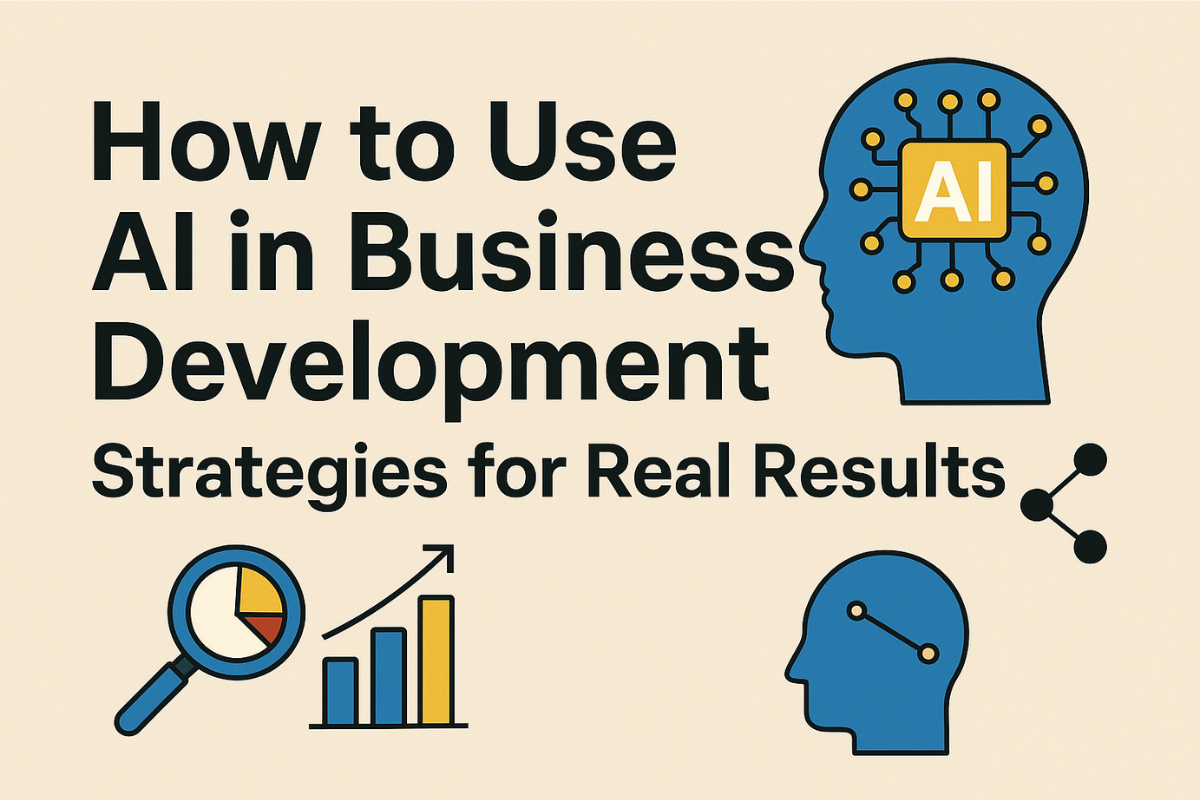All modern companies require speed, the ability to change quickly and secure access to their data. Even now, many companies depend on old systems that stop them from growing and becoming efficient. Cloud Computing Essentials Unlock Benefits for Your Business by providing scalable, on-demand resources, improved collaboration, and cost savings.
You’ll find out how cloud computing operates, why it is important and how it can help your business in 2025 and the future.
Business operations have changed due to cloud computing which offers useful tools and resources online. Learning about cloud computing can help organizations achieve better processes, greater flexibility and more creativity. Learn about the main advantages of Cloud Computing which are scalability, cost-effectiveness and increased productivity for your company.
Table of Contents
ToggleWhat is Cloud Computing?
Cloud computing provides computing services of storage, processing, networking and applications via the internet. Most cloud providers, including Amazon Web Services (AWS), Microsoft Azure and Google Cloud Platform (GCP), offer cloud computing, allowing businesses to use cloud infrastructure instead of their own servers. With the use of distributed computing systems, individuals can access resources from anywhere, providing global collaboration and guaranteeing uninterrupted services.
Importance of cloud computing
Cloud computing offers options like storage, databases, server, networking, analytics, software through the internet, commonly called the cloud. This makes it possible for users to view and save information stored far from their local devices on servers. It saves companies from the expense of owning and maintaining hardware. Because of this, technology is now available to more people which helps both startups and larger companies come up with creative ideas without needing to spend a lot at the beginning.

The Evolution of Cloud Computing
Although cloud computing was first introduced in the 1960s, they really took off in the 2000s. Amazon launched cloud services which transformed the industry and made them the first innovators in the field.
In the industry AWS, Google Cloud and Microsoft Azure all remain the lead of innovation and gained major achievements.
How Cloud Computing Works
Cloud computing helps users to access servers, storage, databases and applications via the internet. You don’t have to depend on local hardware or on-premises servers, you can access remote data centers managed by cloud providers. Here’s a breakdown of how it works:
1. Core Components of Cloud Computing
Cloud computing relies on three main components:
- Infrastructure: The blueprint of how components interact in a cloud environment, including servers, storage, networks, and software. The physical hardware that is located in data centers.
- Virtualization: Enables the creation of virtual environments, allowing multiple users to share a single physical server. It improves resource efficiency and reduces costs.
- Networking: Systems that make sure data is sent safely between users and cloud servers.
Example: Netflix does not save the movies you watch on your device. In advanced cloud computing, data center servers provide information to users.
2. Cloud Service Models
Different models of cloud services are available based on what the user requires.
- Infrastructure as a Service (IaaS): Iaas offers virtualization computing resources like storage, servers and network etc, via the internet. Users control the data and applications and Cloud providers handle the infrastructure. This is an ideal choice for those who need flexible hardware resources or full control over their IT resources.
Examples: AWS EC2, Microsoft Azure Virtual Machines, Google Compute Engine. - Platform as a Service (PaaS): PaaS offers a framework for developers to build, deploy and manage applications without worrying about hardware management. This helps companies to focus only on application development not on their managing infrastructure. It offers benefits for developers to simplify app development, scalability without worrying about management. Examples: Google App Engine, Heroku, AWS Elastic Beanstalk.
- Software as a Service (SaaS): SaaS offers software applications, especially on subscription basis via the internet. You do not have to worry about updates and installation and users can access through web browsers.
- Examples: Google Workspace, Microsoft Office 365, Dropbox, Zoom.
3. Cloud Deployment Models
According the different needs cloud computing are deployed in different ways:
- Public Cloud: Public cloud resources are shared with multiple users and managed by third-party providers. It’s cost-effective and scalable.
- Example: Google Cloud Platform.
- Benefits: Cost-effective, scalable, and easy to deploy.
- Drawback: Limited customization and potential data security concerns.
- Private Cloud: A dedicated cloud environment for a single organization, offering more control and security.
- Example: An in-house data center or a private cloud setup by a company.
- Benefits: Enhanced privacy, compliance with regulations, and tailored solutions.
- Drawback: Higher costs due to dedicated resources.
- Hybrid Cloud: Combines public and private clouds, allowing data and applications to be shared between them. This offers flexibility and the best of both worlds.
- Example: A company using a private cloud for sensitive data and a public cloud for less critical workloads.
- Benefits: Flexibility, cost-efficiency, and scalability.
- Drawback: Complex management and potential integration challenges.
- Multi-cloud: An IT organization often uses several cloud computing or platform services to address what is needed. Make use of different cloud strategies instead of sticking to only one cloud platform and benefit from services offered by two or more cloud vendors such as Amazon Web Services (AWS), Microsoft Azure, Google Cloud Platform (GCP), IBM cloud and others.
- Example: Netflix, Spotify, Airbnb
- Benefits: Increased reliability and flexibility.
- Drawback: Requires robust management strategies.
4. Data Management and Access
- Data Storage: Cloud data centers store your data on multiple servers. Due to advanced replication techniques, your data is backed up and always available.
- Access: Through the internet users connect to the cloud and with web browsers, software interfaces or APIs users access resources.
- On-Demand Resources: Cloud services provide on-demand resources. With these resources, users can scale up and down according to your needs.
5. Security and Monitoring
Cloud providers implement robust security measures, including:
- Encryption: It encrypted your data during transfer and at rest.
- Access Controls: You have access to control by using multi-factor authentication (MFA), users authenticate before accessing resources.
- Monitoring: Cloud providers are always checking how services are running and looking for threats to keep things safe and secure.
6. Billing and Pricing
Cloud computing works on a pay-as-you-go basis. You are charged only for what you use such as storage space and data transfers. Because prices are flexible, you do not have to pay for hardware.
Unlocking the Benefits of Cloud Computing
Cloud computing has revolutionized how businesses operate, offering a plethora of advantages:
- Scalability
With Cloud computing you can scale your resources up and down, making it easy to handle growth or fluctuating demand. This is very beneficial during peak times and for those businesses that are fluctuating with workloads.
- Cost Efficiency
It is a major benefit that it is cost effective. It eliminates the expensive hardware cost and with a pay-as-you-go model you only pay for what you use.
- Accessibility and Collaboration
Teams can collaborate in real-time and you can access files and applications from anywhere in the world. It also offers remote work opportunities.
- Disaster Recovery and Backup
Most cloud providers include disaster recovery mode and ensure that your data can be quickly restored if there is a cyberattack, malware issue or downtime.
- High Availability and Reliability
Cloud services are designed for high availability, ensuring minimal downtime. Redundant systems and data centers enhance reliability.
- Enhanced Data Security
Leading cloud providers implement advanced security measures, including data encryption and regular updates to protect against threats.
Cloud Computing Essentials for Business Success
Cloud computing is essential to grow your business and expand at large-scale.
Essential Tools and Platforms:
Businesses can gain advantage of using management tools, CRM softwares, data analytics all accessible through the cloud.
How Businesses Use Cloud Technology
From ecommerce stores to websites, businesses use cloud technology to manage their tasks, customer relationships and also for delivery services.
Case Studies of Successful Implementation
Companies like Netflix and Airbnb have thrived by embracing cloud technology, scaling globally and delivering seamless customer experiences.

Popular Cloud Providers and Their Offerings
- AWS Overview:Amazon Web Services offers a comprehensive range of services, from storage to machine learning.
- Microsoft Azure Features: Azure is known for its integration with Microsoft products and strong enterprise support.
- Google Cloud Benefits: Google Cloud excels in data analytics and AI-driven solutions.
Steps to Started with Cloud Computing
There are following steps to get started with cloud computing services:
Step 1: Setting Up a Cloud Environment
First step is to choose the right cloud provider and set up an account. Some providers offer free trials to get and explore their services.
Step 2: Migrating to the Cloud
Migrating data and applications can be complex but is manageable with the right strategy and tools.
Step 3: Managing Cloud Resources
Use management dashboards to monitor usage, control costs, and optimize performance.
Challenges and Risks
While cloud computing offers immense benefits, it also comes with its share of challenges:
- Data Security and Privacy
Strong security is needed for the cloud storage of sensitive data which means businesses should use strict regulations such as GDPR or HIPAA. - Downtime and Outages
Although rare, service outages can occur, disrupting business operations. Organizations need contingency plans to handle such situations.No system is perfect, but redundancy and backup strategies help minimize downtime. - Vendor Lock-In
Relying too heavily on a single provider can limit flexibility and make it difficult to switch providers. - Cost Management
Without proper monitoring, cloud expenses can spiral out of control. Implementing cost management tools can help optimize usage. - Navigating Regulatory Complian Different industries have specific regulations. Understanding compliance requirements is essential when adopting cloud services.
Conclusion
Understanding cloud computing basics can help businesses do well in the current digital era. Cloud computing is not just a trendy phrase, it means a lot in the way technology is given and used. SaaS, IaaS and hybrid cloud are some of the many options they provide without limits. While adopting cloud technologies, businesses mainly concentrate on innovation, security and sustainability, ensuring a bright future for this technology. With cloud tools, you can handle your tasks, including storage and working together with others. It is not just a trend to use these technologies; it is necessary for future success.









